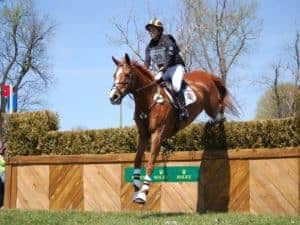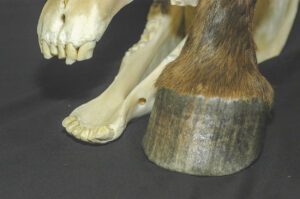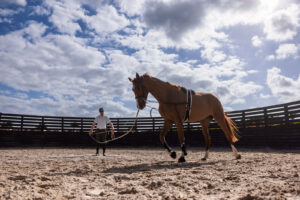Orthobiologics in an Equine Veterinarian’s Day-to-Day Practice

Orthobiologics is a term encompassing a range of biological therapies that help a horse’s body repair itself from acute injury or chronic conditions such as osteoarthritis (OA). These therapies offer better long-term solutions than products that can cause complications when used over an extended period, said Beau Whitaker, DVM, CERP, of Brazos Valley Equine Hospitals in Salado, Texas, at the 2025 IGNITE Sports Science for the Olympic Disciplines Seminar, held Jan. 12-13, in Ocala, Florida.
Deciding on an Orthobiologic for Use in Horses
How do veterinarians decide which orthobiologics product to use? Typically, they look to their own and others’ anecdotal experiences, peer-reviewed research (mostly in humans), research or data provided by a company, and client preferences.
Other factors veterinarians consider when deciding on a specific product include:
- Time frame
- What is the horse’s competition schedule?
- What is the withdrawal time of the product (i.e., how long before competition must the treatment be administered to comply with regulations)?
- Is the horse hurt or injured (versus giving an injection for maintenance purposes)?
- The effect relative to diagnosis
- Is the issue with soft tissue, the joint, or both?
- How severe is the injury/condition?
- How old is the horse?
The ideal dosage for many orthobiologics remains unknown. Whitaker said veterinarians make the decision relative to joint size and pathological severity as well as anecdotal experience. To date there isn’t “clinical data evaluating dose response relative to product and condition treated,” he added.
Orthobiologics for Equine Asthma
In the second part of the discussion on orthobiologics, Dan Dreyfuss, DVM, MA, of D. J. Dreyfuss DVM LLC Consulting, in Hampstead, Maryland, spoke about using orthobiologics for respiratory diseases.
Researchers conducted a small pilot study to look at the initial safety of nebulizing orthobiologics. Eight horses with mild asthma were evaluated and assigned a baseline weighted clinical score (WCS) based on nine respiratory-related clinical signs. They then received a series of six nebulizations at 48-hour intervals. The practitioners saw no significant safety issues, and seven out of the eight horses improved their WCS.
Next came a larger pilot study where researchers repeated the same administration and evaluation protocol as in the initial safety study. Thirty out of 34 horses (88.2%) demonstrated a positive response to orthobiologics through nebulization. Results from these small studies are enough to encourage researchers to perform a larger study, said Dreyfuss.
Take-Home Message
“Orthobiologics are moving us in the right direction,” said Whitaker. Questions remain about the clinical data, required dosages, and product safety.
Dreyfuss said it’s early in the process of using orthobiologics for horses with asthma, but he is encouraged by the significant clinical improvement in a large percentage of horses in the pilot study.
With more time and research the different roles of orthobiologics in horses will become clearer, he added.

Related Articles
Stay on top of the most recent Horse Health news with

















